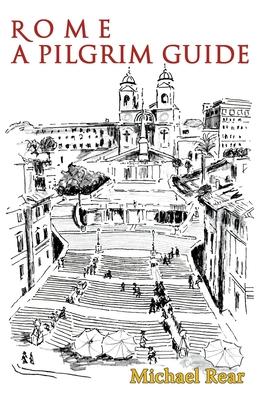Michael Rear has been leading pilgrimages to Rome for decades and is well aware how exhausting, even bewildering, the Eternal City can be for the new or inexperienced visitor, especially during the tiring heat of summer. In this new guide, he pays particular attention to the practical side of any visit to Rome, supplementing his introduction to the city's incomparable heritage (both Christian and pagan) with a wealth of useful information to help the individual pilgrim or tourist make the most of their time in the city. The public transport system is fully explained, details given of individual bus and metro routes, and helpful maps show the sometimes difficult-to-find locations of bus stops. Equally important are useful web addresses, handy for checking the seemingly ever-changing opening times of Roman churches and other institutions, and essential for securing tickets for popular attractions where booking in advance is mandatory. All every visitor needs for a short visit is here; for the pilgrim there is a core daily (but fully flexible) programme for a week's stay, and for those travelling with an organised group the guide provides essential background reading. In an ancient city like Rome it is useful to follow a historical order, and that is the pattern of this guidebook, beautifully illustrated with line drawings by Hilary Griffiths. The extensive remains of classical Rome illuminate the world of the early Christians, many of whom were martyred in successive waves of persecution, and lead us on to the remarkable series of rock-hewn tombs or catacombs where they were buried, and the excavations beneath St Peter's where the apostle was laid to rest in a cemetery rich with mosaics and wall-paintings. The great basilicas founded by the Emperor Constantine in the fourth century are followed by churches, monasteries and shrines of every age up to the modern day. Particular emphasis is given to the city's Christian heritage, but Rome's many other attractions - museums, art galleries, piazzas, palaces, fountains and gardens - all have their place here, along with recommendations on where to eat and stay, while outlines of history and culture put events and personalities into their wider context. Michael Rear delights in pointing out connections which might have a special resonance for visitors from Britain and from Ireland. The pilgrim's visit is underpinned with appropriate prayers and meditations and information about church services.

Michael Rear has been leading pilgrimages to Rome for decades and is well aware how exhausting, even bewildering, the Eternal City can be for the new or inexperienced visitor, especially during the tiring heat of summer. In this new guide, he pays particular attention to the practical side of any visit to Rome, supplementing his introduction to the city's incomparable heritage (both Christian and pagan) with a wealth of useful information to help the individual pilgrim or tourist make the most of their time in the city. The public transport system is fully explained, details given of individual bus and metro routes, and helpful maps show the sometimes difficult-to-find locations of bus stops. Equally important are useful web addresses, handy for checking the seemingly ever-changing opening times of Roman churches and other institutions, and essential for securing tickets for popular attractions where booking in advance is mandatory. All every visitor needs for a short visit is here; for the pilgrim there is a core daily (but fully flexible) programme for a week's stay, and for those travelling with an organised group the guide provides essential background reading. In an ancient city like Rome it is useful to follow a historical order, and that is the pattern of this guidebook, beautifully illustrated with line drawings by Hilary Griffiths. The extensive remains of classical Rome illuminate the world of the early Christians, many of whom were martyred in successive waves of persecution, and lead us on to the remarkable series of rock-hewn tombs or catacombs where they were buried, and the excavations beneath St Peter's where the apostle was laid to rest in a cemetery rich with mosaics and wall-paintings. The great basilicas founded by the Emperor Constantine in the fourth century are followed by churches, monasteries and shrines of every age up to the modern day. Particular emphasis is given to the city's Christian heritage, but Rome's many other attractions - museums, art galleries, piazzas, palaces, fountains and gardens - all have their place here, along with recommendations on where to eat and stay, while outlines of history and culture put events and personalities into their wider context. Michael Rear delights in pointing out connections which might have a special resonance for visitors from Britain and from Ireland. The pilgrim's visit is underpinned with appropriate prayers and meditations and information about church services.